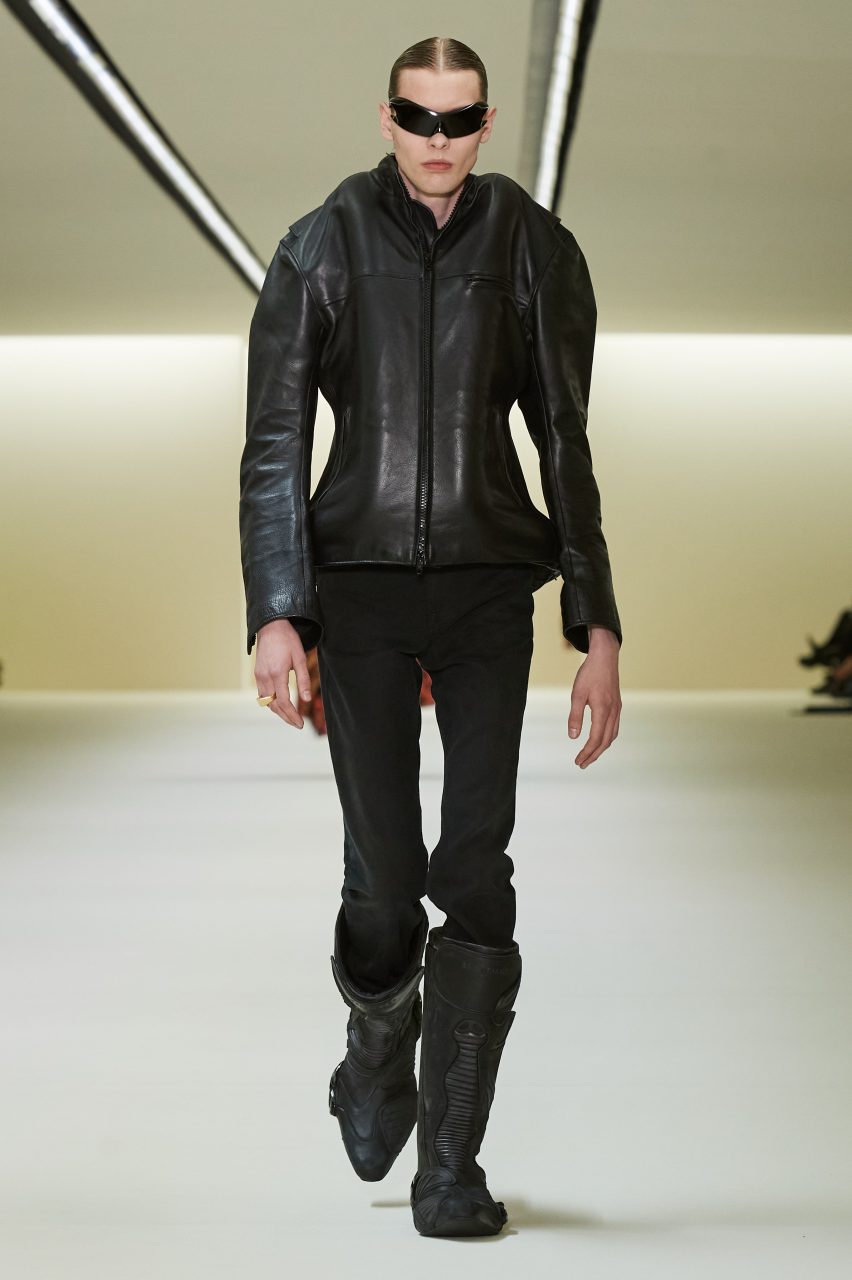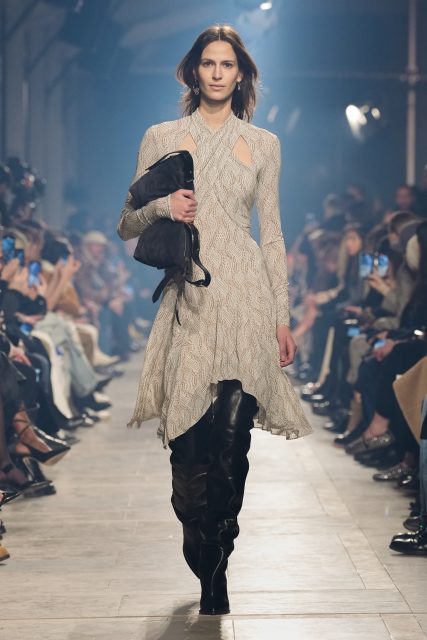Balenciaga’s autumn/winter 2023 collection was a stripped back reflection of Demna’s core aesthetic. Vogue reports on the five biggest takeaways.
It was the first Balenciaga show since the campaign crisis
You could view this season’s Balenciaga show as a form of crisis management. It was the house’s first presentation since the social media-driven uproar caused by its Gift Shop and Spring 2023 campaigns, and its poor response to said uproar, which it atoned for with apologies and a partnership with the National Children’s Alliance. “I think what happened with Balenciaga last year is a bit of a case study. Because no one knows what to do about these things,” its artistic director Demna said on a phone call the day before the show. “What’s the right thing? It’s quite shocking, actually, to not even have any tools to deal with it. A lot of things happen for the first time right now when it comes to social media and the internet and how we interact with it.” For his first show after the crisis, Demna found his tool of choice in reduction. Presented in a white box within the Carrousel du Louvre, it was stripped to its core: the clothes-making that defines his job and the codes that embody his aesthetic.
The collection was Demna’s core aesthetic
The collection revolved around five key ideas. In an upside-down approach to clothes-making innate to Demna’s practice, it opened with a series of tailoring looks made from deconstructed formal trousers. Draped monotone dresses styled gesturally over massive handbags followed, before an array of the broad-shouldered pleated print dresses that have followed the designer since his Vetements days. Iterations on jackets and tracksuits architecturally imbued with shrug-like body language segued into sci-fi sculpted bourgeois coats and evening dresses, concluding in a string of ballgowns. The models processed down Demna’s toile-covered runway to a solemn guitar and piano soundtrack, their attitude bereft of character and perhaps best described as nondescript. The atmosphere was neutral. “It’s the perfect collection to start with, after all the drama, to underline what my values are as a designer: clothes and making them; always have been,” Demna said.
Demna started working on it before the crisis

Copilot - fashionShowID:63e0ebcdd43a506d2813b819 - assetID:6404933dadcc1b2e1a8eeeb0
Photo: Carlo Scarpato via Gorunway.com
While the crisis had fuelled his desire to purify his message at Balenciaga, Demna said the idea for the show had been longer in the making. “In October, I decided I was going to focus on clothes and put them in the spotlight again because that’s what my job is and what I do best.” He was starting to feel like the theatre that surrounded his shows was taking away attention from the clothes. “People didn’t see the collection any more behind it, because there was The Snowstorm and The Mud Show. I was really frustrated. The Mud Show was the climax to that because I felt like the concept of the show was becoming more important than the actual collection. Not in my eyes, but in the eyes of the audience,” he said. “A lot of people thought I would do a show as a response to the crisis, which was completely not the case. First of all, you cannot make a show in two months. And I would never make a collection that would be a response to that.”
It marked a departure from celebrity exposure
Not one celebrity attended this season’s Balenciaga show. Their absence painted a contrast to the fame-driven marketing that has defined the house in everything from campaigns to shows, which have featured the likes of Kim Kardashian and Justin Bieber, and catapulted Demna’s work into global awareness. “I have never been into dressing celebrities,” he said. “This is something that happened with the growth of the brand and the global exposure. It became a part of it. But for me as a creative, it’s not something that represents my vision and it’s not something I need for my vision to evolve.” As a contrast to the limelight that surrounded him prior to the crisis, he spent the months after getting back to basics in his atelier. “I ended up making clothes. I found a solace in that. Almost like a shelter. I wasn’t thinking about anything else but that; but what I was doing. It made me realise why I’m a designer and why I do all of this. It’s the only zone where I feel comfortable and happy.”
Demna considered the show a silver lining
Was Demna nervous about the show? “I have to say, I’ve been so nervous for so long now that I’m numb to it. I already suffered through it, so now I’m more excited. It’s a solid representation of my vision for Balenciaga and as a designer, so I’m not nervous about that,” he said. “At the end of the day, you have to bring out something positive even from horrible situations like this. For me, the positive thing has been reconnecting with myself and understanding what’s my real purpose. I go back to square one: making a jacket and a coat. It’s almost like rehab.”
Read Next
Isabel Marant’s Autumn/Winter 2023 Collection Is For Girls Who Want To Have Fun
Editor
VogueCredit
Lead image: Carlo Scarpato via Gorunway.com




